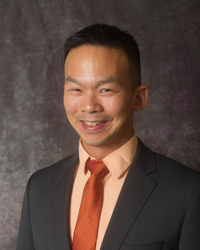Improving Recruitment Through Community Engagement

By Tyler Menichiello, Chief Editor, Bioprocess Online

An impeccable site staff and a bullet-proof protocol mean nothing if you can’t recruit patients to your clinical trial. When it comes to engaging patients in research and having a community presence, University of Pittsburgh Medical Center’s (UPMC) Dr. Ken Ho walks the walk. He’s spent the past decade working alongside community leaders to treat and prevent HIV in Pittsburgh, collaborating with local organizations like Allies For Health And Wellbeing, Jewish Healthcare Foundation, Shepherd Wellness Community, Project Silk, and AIDS Free Pittsburgh that serve people impacted by HIV. Back in 2013, he started UPMC’s HIV pre-exposure prophylaxis (PrEP, a medicine that reduces the chance of contracting HIV) clinic, and he’s now the acting medical director of the Pitt Men’s Study — a multicenter, NIH-funded study of HIV/AIDs that’s been ongoing in Pittsburgh since 1984.
Last year, Ho increased recruitment in the Pitt Men’s Study by 35% in just six months. He humbly attributes this to leveraging the connections he’s made during his tenure serving the community. I had the great pleasure of speaking with Ho about his community involvement and the relationships he has with his patients. From our conversation, it’s clear that trust and transparency are the guiding principles in the work he does.
The Power Of Presence
Recruiting patients begins with earning the trust of the community. According to Ho, this means taking time to form meaningful connections. A great first step is attending community events — which, in his experience, includes everything from health fairs to pride events, and even drag shows.
Certain events provide a greater outreach opportunity than others. For example, Ho says, Pittsburgh Pride historically boasts the largest attendance in terms of sheer numbers (an estimated 80,000 people attended this year). Whatever and wherever these events may be, community engagement begins with showing up. “It’s great for providers and sponsors to have a community presence,” he says, “even if that means you sit all day in the sun or under a tent, and no one talks to you. What’s important is that the community knows you were there.”

While his schedule affords it, Ho understands that not all working doctors have the freedom or flexibility to attend community or charity events, especially those that go into the evening hours. “I wish the [healthcare] system would incentivize or encourage that kind of time,” he says. Unfortunately, physicians operate in a system that is productivity based. “There’s only so many hours in the day, and providers need to manage a lot of competing interests.”
Trust Is A Two-Way Street
With historical wrongs like the Tuskegee Syphilis Study and the case of Henrietta Lacks, Ho thinks patients’ hesitancy to participate in research is understandable. It’s important for sponsors to recognize this historical context when addressing patient concerns. “We can say it’s different now, how we have IRBs and all these different things,” he says, “but at the end of the day, optics are important.” Sponsors need to demonstrate their intentions and trustworthiness through action. One way to do that, he says, is meeting with the community to answer their questions.
By hosting these kinds of “townhall” meetings, Ho’s team saw improved recruitment for the Pitt Men’s Study. “We did this exercise where community members interviewed researchers and clinicians,” he explains. Members asked questions about the risks associated with investigational drugs, the benefits of research, and how researchers are incorporating diversity, equity, and inclusion in their recruitment efforts. When it comes to recruiting, community members want to ensure that research includes the populations most impacted by a health issue. Ho says these questions often lead to discussions where the community can teach researchers how to accomplish this.
During these meetings, Ho says, the topic of compensation usually comes up. “There are often questions about how studies are appropriately compensating participants and not exploiting vulnerable populations,” he tells me. He goes on to explain how the opposite can also be problematic. “If compensation is too generous, there’s a concern that researchers are being coercive in their approach to recruitment and using higher incentives to exploit populations in need of financial benefit.”
These town halls continue to serve as opportunities for the community to not only learn about research, but to get to know who researchers are as people. It also allows them room to share their candid feelings about mistrust in the medical establishment. Ho says having these kinds of open, honest conversations improved relations between the community and the researchers. “They realized they could trust us.”
This two-way approach to communication is one Ho practices with his own patients. “A lot of times, we as medical providers tend to put up these walls where we’re very clinical,” he explains. “I’m going to ask you lots of probing, invasive questions, but you can’t ask me those questions. Why is that fair? Why is it so one-sided?” He says allowing patients to ask some personal questions and sharing a little about himself can help break down some perceived barriers. Ultimately, he says, this leads to a more trusting, open relationship.
Tapping Into Community
The strength of community among patients is a force to be reckoned with. In Ho’s experience, community perception can affect recruitment. He explains how it was word of mouth that brought people to the PrEP clinic when its doors first opened in 2013. “The initial response was one of suspicion, and a little bit of fear,” he recalls. A lot of the same people who were skeptical ended up coming back. When he asked them what changed, the common answer was that a friend of theirs was on PrEP. “It speaks to me very strongly how important one’s community is when it comes to what to trust, and what to believe,” he says. “They trust friends and the experiences they have.”
This sense of community and altruism often motivates patients to participate in a study. While participants of the Pitt Men’s Study are paid, Ho says for many participants, money isn’t their primary motivation. “What ultimately keeps them coming back is the belief that what they’re doing is important and helps the community,” he says. However, he cautions sponsors not to rely entirely on this selflessness alone. While ideal, “in a realistic world, participants’ incentives and compensation need to be appropriate to demonstrate that the research institution adequately values its participants and is not exploiting their good will.”
Sponsors building trust with patients is important, but it also helps to do so with physicians, nurses, and other healthcare providers. After more than a decade of being an HIV provider, Ho has more of a reputation and connection with patients than any sponsor. According to Ho, this is the secret behind his successful recruiting efforts for the Pitt Men’s Study. “Part of it was leveraging as many connections as I had, but a lot of it was just talking to my own patients,” he says. He also enlisted the help of his colleagues, who would mention the study to their patients. In his experience, patients are more likely to trust their providers than sponsor representatives they don’t know. By working with providers, sponsors can tap into this built-in network of participants to bolster recruitment efforts.
When involving a provider, Ho suggests that sponsors engage them directly – face-to-face or virtually – to answer questions and communicate the importance of the study. He also urges sponsors to keep it brief. “Providers are often juggling multiple duties,” he says, “so it’s important that the “ask” involves minimal work and limits inconvenience as much as possible.” He says sponsors may have better rates of acceptance in an academic clinical setting (e.g., university hospitals), since many of these providers already understand research. “The learning curve may be greater for providers who don’t have much familiarity with research, and that may involve more education on the back end.” However, there are also some non-academic practices that successfully recruit for research studies.
Ho says he’s also seen a lot of success utilizing research registries. Participants who are interested in research can join a registry and receive information about various studies for which they may be eligible. Though not necessary, he says providers can get involved in this as well. “They could be the ones to call registrants to provide information and answer questions about a study,” he says.
While using providers can be a great way to improve recruitment efforts, Ho says, it isn’t sustainable in a productivity-based healthcare system. Whole articles have been written about the downsides of productivity-based healthcare, but when it comes to research, the time constraints imposed on providers especially hinders their ability to recruit study participants. Ho says that during a regular patient’s visit, there isn’t much time to present information about a clinical trial in an understandable way. “In an ideal world, you’d be able to sit down and explain everything in layman’s terms,” he says, “what it is we’re doing, why we’re doing it, and why it’s important.” When patients understand the aims of a study and how their participation fits into that, they’re more likely to consent. He says taking this time to explain how the study benefits the community is the most successful approach in recruiting participants. Allowing more time to do this would lead to better outcomes for engagement and patient recruitment.
In any case, it takes serious effort from researchers to effectively engage the communities they serve. It demands taking the time to meet with patients and providers, listening to their concerns, and earning their trust through open, honest communication. If there’s one thing to be learned from Ho’s experience, it’s that recruitment is far from a passive process.
